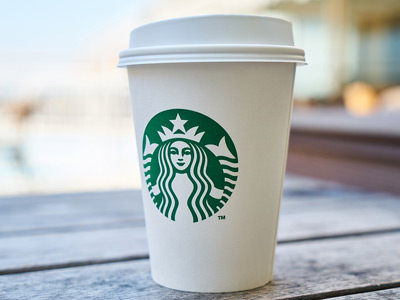


Why Colour is Important for your Brand
21/06/2018
Colour can communicate a lot, yet much of the time it affects us at a subconscious level. Studies have shown that we often make our mind up on whether we like the look of a product or brand within 90 seconds; furthermore, up to 90% of this decision can be based purely on whether we like the colours or not.
Certain colours often evoke an emotional response - an obvious example being bright red, which can draw our attention and cause us to anticipate danger. Conversely, green, because of its association with nature, can elicit a sense of peace and calm, which is why it's often used by brands to promote healthy or environmentally beneficial products.
Conversely, green, because of its association with nature, can elicit a sense of peace and calm, which is why it's often used by brands to promote healthy or environmentally beneficial products.
Not all colours evoke such strong associations; much of the time, the effect colour has on us is subtle, though no less powerful! A good example of this is with the colour blue. Whilst blue may not be widely thought of as a particularly positive colour (even the name 'blue' carries negative connotations of feeling down or depressed), blue has been found to evoke a sense of calm, stability and trust. For this reason, many of the world's biggest financial or social institutions, such as banks (Halifax, Nationwide, Barclays, RBS) and social media companies (Facebook, Twitter, LinkedIN), use blue as their primary brand colour to portray a sense of safety and trustworthiness. Black is another good example of the way colour can impact us subtely. Again, black may not necessarily conjure up positive feelings when you think about it, however, the use of black in branding has become a visual standard in the high-end, luxury market. If you were to consider the leading brands in the fashion industry (D&G, Chanel, Prada etc.) you will quickly appreciate that they all use black to associate their brand with sophistication and class.
When considering what colours to use in your brand identity, understanding your target market and how they are likely to respond to a colour can be an important factor in ensuring you communicate effectively to the right people. The demographic of your target market will play a part in how they respond to colour; for example, if you were primarily targetting a specific gender, certain colours have been shown to perform better for a female audience than a male one, and vice versa. One study in particular observed that whilst both men and women typically preferred the colour blue, and both disliked oranges and browns, women liked a wider range of colours (purple being their second favourite colour).
 The location and culture of your target market can also play a part in the way they interpret and respond to colour since colours can carry different connotations in different places around the world. As already mentioned, red can sometimes be thought of as an alarming colour in Western society, but in some Eastern cultures, red is the colour of prosperity and good luck, and is often worn by brides on their wedding day. In the West, yellow is often seen as a fun, lively colour; however, in some African countries yellow is the colour of mourning.
The location and culture of your target market can also play a part in the way they interpret and respond to colour since colours can carry different connotations in different places around the world. As already mentioned, red can sometimes be thought of as an alarming colour in Western society, but in some Eastern cultures, red is the colour of prosperity and good luck, and is often worn by brides on their wedding day. In the West, yellow is often seen as a fun, lively colour; however, in some African countries yellow is the colour of mourning.
The power of colour to communicate different things to different audiences should not to be underestimated and care should be taken when using colour in your branding and marketing collateral. When businesses get it right, colour can become an integral part of their brand identity - even looking at a specific colour tone can sometimes make you think of their branding (Coca-Cola's red, Pepsi's blue and Starbucks' green could be good examples). Associating your brand with a well researched colour scheme can result in greater engagement with your target market and it can even make the difference between your brand identity being trusted or not.
If you're interested in discussing your business' brand identity please get in touch today.
